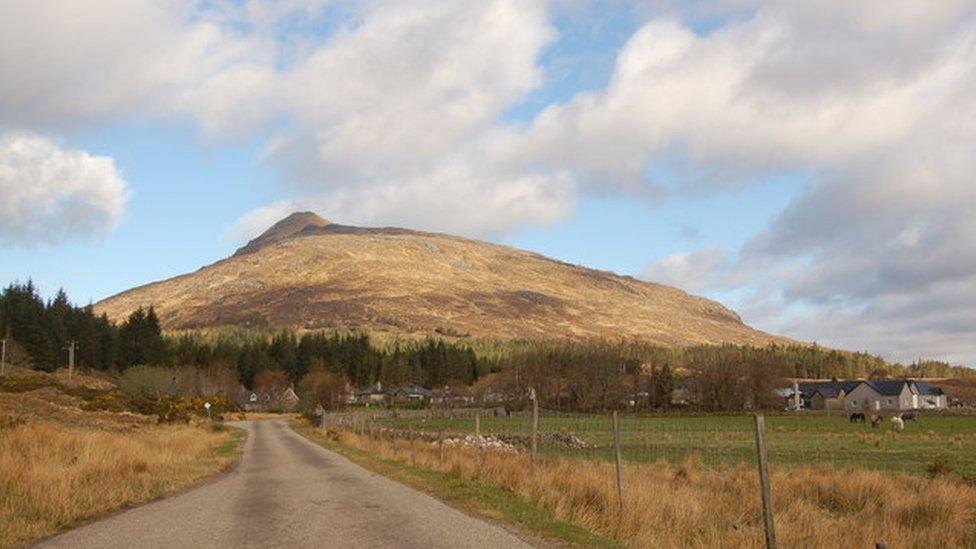New maximum temperature for December recorded in Highlands
- Published

A temperature of 18.7C was recorded in Achfary on 28 December
A new maximum temperature for December in the UK has been provisionally recorded by the Met Office.
Data suggests a temperature of 18.7C was reached at Achfary, in the Highlands of Scotland, on 28 December.
If validated, it would be the hottest day of the month on record in Britain.
The current record stands at 18.3C, in Achnashellach in the Highlands on 2 December 1948. The temperature has been put down to a meteorological phenomenon known as the Foehn Effect.

This is a change from wet and cold conditions on one side of a mountain to warmer and drier conditions on the other side.
The most notable Foehn events tend to occur across the Highlands, where moist prevailing westerly winds encounter high ground along Scotland's west coast.
Record-breaking month
It would be the second time a Highlands temperature record has been broken this December.
A record temperature of 16.8C has already been verified for Cassley in Sutherland.
It was recorded at 03:00 GMT on Sunday 29 December. It is the highest on record for 29, 30 or 31 December.
Northern Wales and north-east England were also unseasonably warm on Saturday night.
Forecasters also attributed Saturday night's "remarkably" warm overnight temperatures to the Foehn Effect.
The lowest temperature recorded on the same day was 1.7C in Writtle, Essex.
What are the Foehn winds are and how can they influence our weather?
What is the Foehn Effect?
It occurs when moisture-laden, high humidity air is pushed over high ground by strong winds. As it rises, the air cools and condenses, forming cloud and rain.
Dry air then travels down the other side of the mountain, picking up heat as it goes and resulting in higher temperatures at ground level.
In the UK, this effect is commonly seen in eastern Scotland, north-east Wales and north-east England.
Allow X content?
This article contains content provided by X. We ask for your permission before anything is loaded, as they may be using cookies and other technologies. You may want to read X’s cookie policy, external and privacy policy, external before accepting. To view this content choose ‘accept and continue’.
- Published29 December 2019
